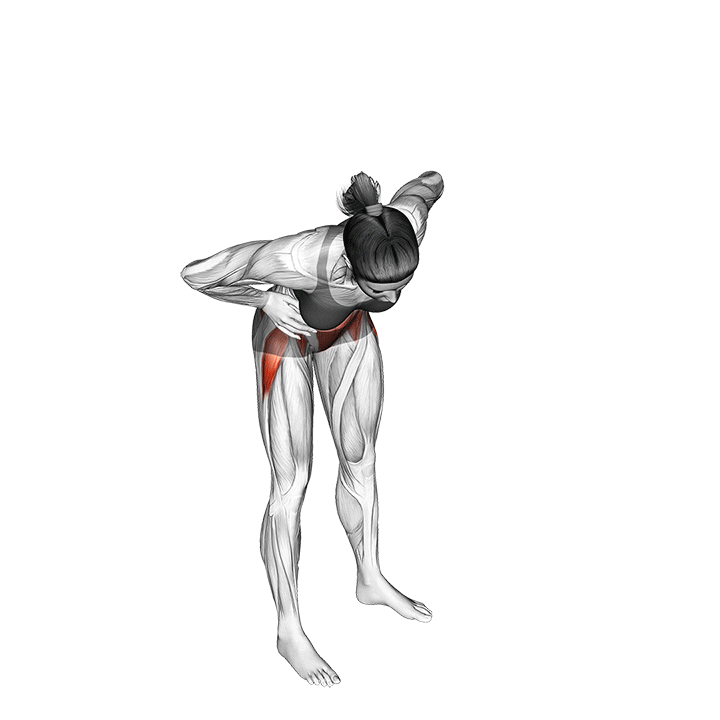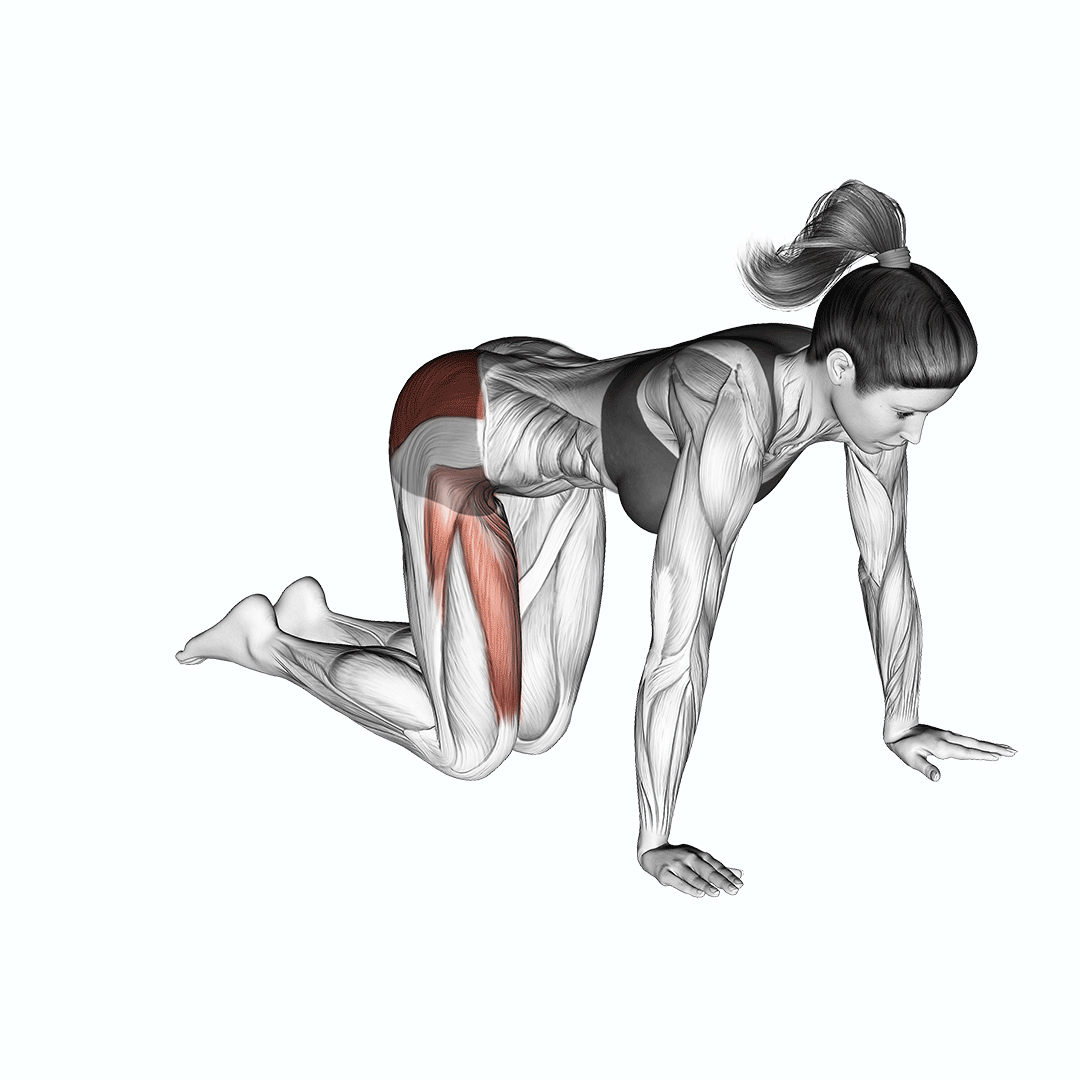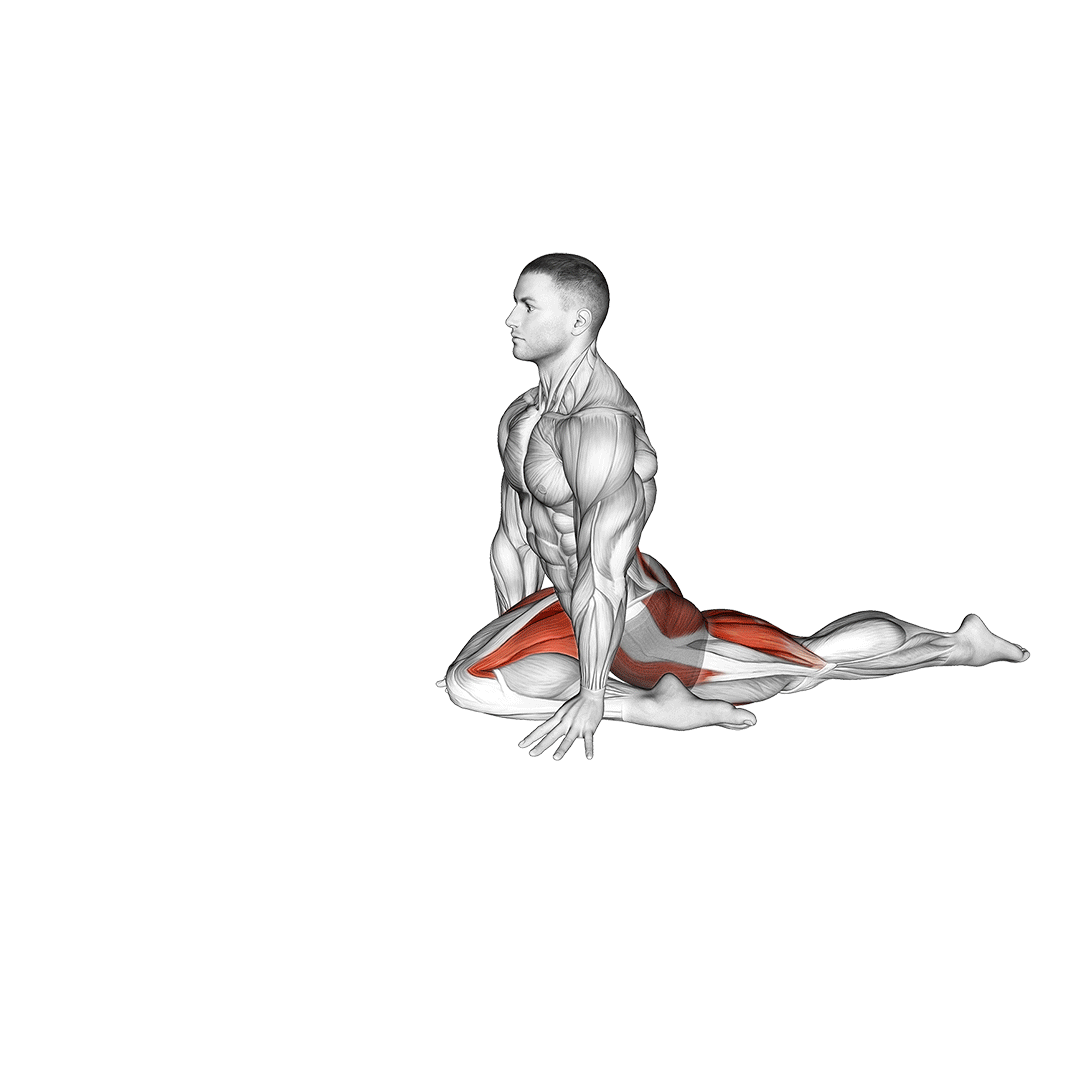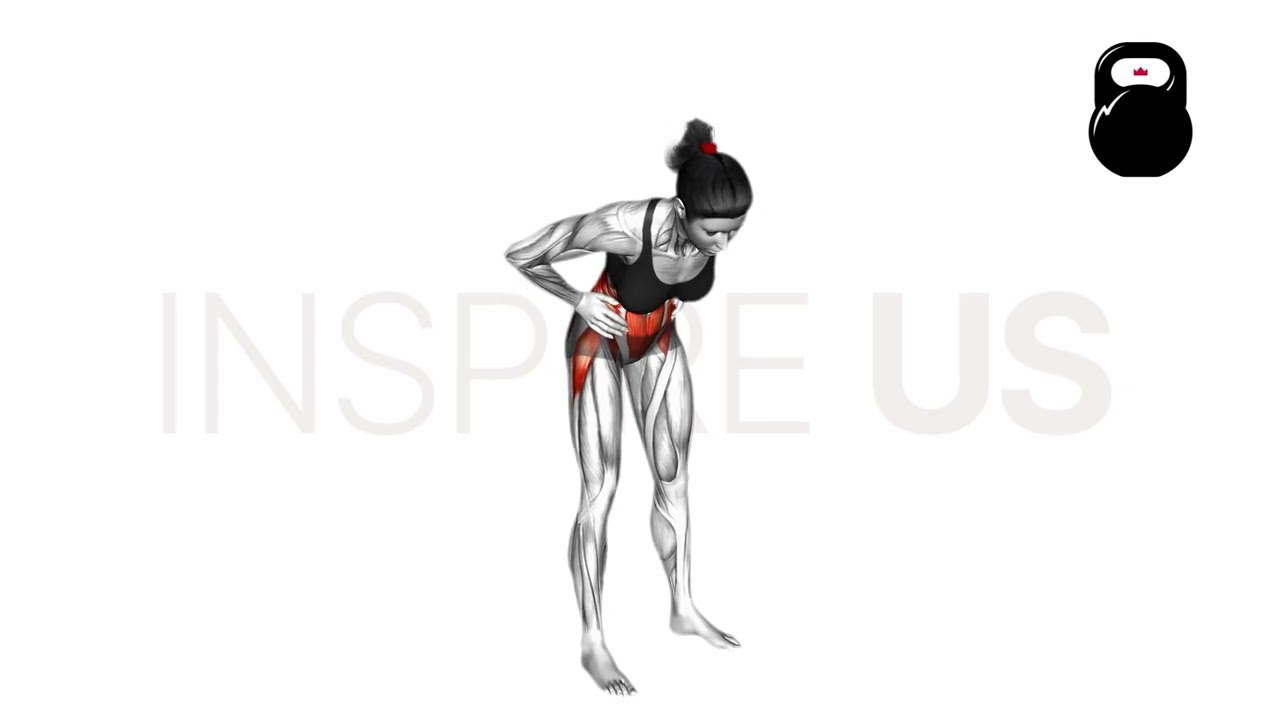Hip Circles: Benefits, Muscles Targeted, and More
Few dynamic stretches are as essential for modern individuals as the hip circle.
With how much time the average person spends in a seated or lying position, properly mobilizing the posterior chain and the hip joints themselves are all but required prior to a training session.
Fortunately, hip circles are quite simple and can be performed with no equipment or experience whatsoever.
What are Hip Circles?
In essence, hip circles are a single-joint dynamic mobility exercise that quite literally feature the performer moving their hips in a circle.

The stretch is performed in a standing position for several repetitions, and is used as both a pre-workout warm-up and as a tool for general mobility and health.
Hip circles use a combination of hip rotation and leg adduction to target the hip joints, lower posterior chain and the hip flexors in a lightly vigorous and impact-free manner. In combination with hamstring and quadriceps stretches, they can help form a highly effective (and convenient) lower body warm-up routine.
How to do Hip Circles
To perform hip circles, the exerciser will first begin by standing with their feet wider than shoulder-width apart, toes pointing forwards and spine neutral.
They then set their hands atop their hips for greater stability and slowly rotate the pelvis out to one side, adducting the opposite leg slightly so as to maximize the size of the circle.
Repeat this rotation for several repetitions before switching to the opposite direction (counterclockwise/clockwise) for the same number of repetitions.
Throughout the stretch, the feet should remain flat on the floor, the head facing forwards and the chest pushed out so as to protect the spine. No bending of the knees should be involved, and the legs should remain straight throughout the entire movement.
What Muscles and Joints are Stretched by Hip Circles?
In terms of skeletal musculature, hip circles stretch the gluteal muscles, adductor longus, adductor brevis and gracilis to the greatest extent - especially in regards to the gluteus medius, minimus and piriformis.

Of course, the main joint being stretched by hip circles are those of the hips themselves - specifically the femur-hip joint where the femoral head meets the acetabulum. The relevant connective tissues of the femoral head ligament and acetabular labrum are included as well.
What are the Benefits of Doing Hip Circles?
Like most other dynamic stretches, the hip circle offers quite a number of benefits - of which are relevant regardless of whether pre-workout or not.
Excellent as a Pre-Leg Workout Stretch
Because so many leg exercises (or leg-intensive activities) involve hip flexion and recruitment of the lower posterior chain muscles, hip circles are among the best warm-up exercises one can perform.
This is further compounded by their dynamic nature - of which is said to be superior to static stretches when performed before a bout of exercise.
In particular, exercises that intensely target the hip flexors and glutes like squats, deadlifts and lunges all benefit from prior performance of hip circles.
For the best results, combine hip circles with similar mobility work that targets the quadriceps and hamstrings. This will ensure the entire lower body is warmed up to a sufficient degree.
Promotes Blood Flow and Potentiation in the Posterior Chain
Apart from improving mobility of the glutes, hip circles also aid in promoting blood flow to the general area alongside greater conscious recruitment of the muscles themselves.
This further enhances performance during exercise performed after the stretch, especially in glute-dominant movements like the deadlift.
Reinforces Hip Rotation, Extension/Flexion and Leg Abduction/Adduction
Performing hip circles can help reinforce and smoothen mechanics related to its general movement pattern - most prominent of which is hip rotation and hip extension or flexion.
Poor hip mechanics are often seen in previously injured athletes or sedentary individuals that spend extended periods of time in a seated position.
Perfect for Sedentary Individuals or Those With Tight Hip Flexors
Tallying up all the other benefits of hip circles (blood flow, reinforces hip function, greater mobility), we can come to the conclusion that the hip circle is one of the best possible mobility exercises for sedentary individuals.
Because the majority of sedentary individuals will frequently exhibit poor flexibility and strength in the hip flexors and glutes, hip circles can be used as an immediate counter to the effects of such a lifestyle.
Of course, this should be in combination with an increase in general physical activity - and even the inclusion of resistance exercises meant to target weak musculature throughout their body.
Simple, Risk-Free and Zero-Impact
Hip circles are of particular note among stretches due to their simplicity and very low risk of injury.
Unlike other hip-focused mobility exercises where the performer needs to be prone or have already-excellent mobility, hip circles are accessible to just about anyone. So long as proper form is followed, it is unlikely that any injuries or difficulties completing the movement will be encountered.
Common Mistakes Seen When Doing Hip Circles
In order to maximize the effectiveness of hip circles, avoid the following common mistakes.
Bending the Knees
Hip circles are meant to rotate the hips in a circle, keeping the knees entirely straight throughout this movement.
Bending the knees as you rotate your hips can reduce the effectiveness of the stretch and shift emphasis away from the tissues surrounding it.
While this doesn’t necessarily mean that the knees should remain fully extended and locked out, it does mean that involving them in any manner other than a supportive one is ideal.
Excessively Narrow Stance
Setting the feet too close together (generally less than shoulder-width apart) can make the movement unnecessarily difficult and even lead to a loss of balance. For the best results, perform hip circles with the feet wider than shoulder-width apart, heels planted.
Rotating the Waist, Not the Hips
Those unfamiliar with hip mobility exercises may find themselves instead rotating at the waist, rather than the hips. This can negate the entirety of the exercise, and potentially lead to undue torsion on the spine.
A good cue to avoid making this mistake is to imagine leading the circle with the glutes - first pushing it back somewhat before bending the pelvis alongside the glutes to one side in a radial motion. Follow through with this movement until a full circle has been completed.
Although optional, placing the hands atop the hips can also help ensure that it is the hips that are moving and not the waist.
Leading With the Upper Body
Much like bending at the waist, it is best to avoid leading the rotation with the upper body. The pelvis should be the first part of the body to move, with the torso bending in the opposite direction only as a secondary motion.
Leading with the upper body can cause a loss of balance or also lead to the waist being rotated, rather than the hips. Lead with the glutes and pelvis as much as possible.
Alternatives to Hip Circles
If hip circles are a bit too dynamic for you - or if they aren’t hitting the glutes the way you would like - try the following alternatives out.
Prone Hip Circles
Prone hip circles are a more advanced alternative to standing hip circles where the performer is on their hands and knees as they raise their bent leg out to the side.

Performing hip circles in this manner further emphasizes the hip flexors and allows for an even greater stretch of the posterior musculature in a unilateral manner.
Pigeon Stretch
The pigeon stretch or pigeon pose is a static posterior chain exercise featuring the exerciser bending one knee to the side at the front as the other extends behind them - all while seated on the floor.

The pigeon stretch is primarily used to stretch out the muscles of the glutes on one side of the body, and is considerably less dynamic than hip circles. As such, the pigeon pose may be a better option as a cool-off or flexibility-focused alternative, rather than one prior to a workout session.
Standing Piriformis Stretch
The standing piriformis stretch involves the performer standing upright and placing the shin of one leg across the thigh of the other, squatting down so as to maximize its effectiveness.
This is done to stretch the muscles of the glutes and aid in relieving the symptoms of piriformis syndrome.
Frequently Asked Questions (FAQ)
What is a Hip Rotation Exercise?
Hip rotation exercises are simply movements involving a radial motion of the hips, often with the use of the hip flexors and posterior chain muscles. Such exercises are primarily performed in order to improve mobility or as a form of rehabilitation, rather than to improve athletic prowess or build muscle.
Are Standing Hip Circles Safe?
Yes - standing hip circles are one of the safest dynamic mobility exercises one can perform. So long as you have no issues balancing in a standing position, then it is likely you can perform hip circles without issue.
Just to be sure however, make sure to get prior clearance from a medical professional. This is doubly true if you are elderly or have sustained injuries to the hamstrings, glutes or the tendons of the hip joint.
How Many Sets of Hip Circles Should You Do?
Unless particularly inflexible, we recommend performing 2-3 sets of 5-6 hip circles each. Make sure to focus on both a clockwise and counterclockwise motion so as to fully mobilize your hips.
In Conclusion
Hip circles are a classic mobility exercise that practically everyone can benefit from.
However, keep in mind that with accessibility comes a lack of specificity. If you have a specific tendon or muscle that is particularly inflexible, performing a stretch with a smaller but more targeted scope may be a better option.
That being said - if you are an otherwise healthy weightlifter, sprinter or simply an individual who finds their hip mobility to be lacking, then hip circles are likely the right exercise for you.
References
1. Van Dillen LR, Bloom NJ, Gombatto SP, Susco TM. Hip rotation range of motion in people with and without low back pain who participate in rotation-related sports. Phys Ther Sport. 2008 May;9(2):72-81. doi: 10.1016/j.ptsp.2008.01.002. PMID: 19081817; PMCID: PMC2597839.
2. Anderson, Sandra K.. Mosby's Stretching Pocket Guide. United Kingdom: Mosby, 2013. ISBN: 9780323226400, 032322640X

